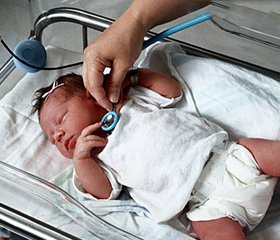Журнал «Здоровье ребенка» 3 (46) 2013
Вернуться к номеру
Features of adaptation in children with small heart abnormalities
Авторы: Okhapkina O.
Рубрики: Педиатрия/Неонатология
Разделы: Клинические исследования
Версия для печати
children, small heart abnormalities, adaptation and compensatory reactions.
Small heart abnormalities (SHA)- is the large group of cardio-vascular system (CVS) development disorders. In most cases SHA don’t have significant clinical and hemodynamic violations. However, it is necessary to mention that now the global meaning about the clinical importance of SHA is absent. Some of them can influence while the child is growing up. According to modern epidemiological data in children in 50-70% cases SHA is visualized in combination with connective tissue non differentiated deficiency.
It is known that the child body while he is growing up is characterized by the high level of sensitivity and plasticity to favourable and unfaurable factors of different nature. So, adaptation abilities of a child body can determine his existence in different conditions.
The goal of investigation: To determine features of adaptation and compensatory reactions in school aged children with SHA. Material and methods of investigation: 179 children with SHA at the age 8-16 years were investigated.
Taking into account the possible combination of SHA with fibrillogenesis disorders all the children were divided into 2 groups. 1 group – children with SHA (59,5%), and the second – children with SHA and non differentiated dysplasia of connective tissue (40,5%).The control group included 30 healthy children.
The express investigation of adaptation and compensatory reactions in school aged children with SHA was carried out with the help of complex of morphological and functional indexes: Robinzon index (RI), level of total tolerance (force index (FI)), disease rate (adaptatonal potency (AP).
Statistic analysis was carried out with the help of parametric and not parametric criteria, probability distribution and correlation analysis.
All the investigation were carried out according to bioethical standards, with parents agreement.
Results and discussion: Reasults of investigation of physiometric and functional abilities of a child with SHA showed there depependence on non differentiated dysplasia of connective tissue. For instance, FI in children of 1 group was lower than in children of control group. Age and gender did not influenced. But in children of 2 group FI was sighnifically higher than in healthy children (р<0,05). The good muscle forse in children with non differentiated dysplasia of connective tissue can be explained by their joints hypermobility and as an effect - constant muscle trainings.
Analysis of CVS abilities showed that in children of control group the highest aerobic abilities of a body are lower than normal middle age criteria’s are. It means that adaptation and compensatory mechanisms are stressed even in healthy children.
It was established that middle values of RI in school aged children with SHA corresponds to lower level of functional ability of heart muscle and does not depend on gender of a child.
The tendency of sighnificant decreases of energy potential is visualized in children of 2 group. The reason is the high rate of polysystemic disorders of different organs.
Taking into account that RI shows the aerobic abilities of a child and level of somatic health, such results can explain poor functional abilities of CVS in children with SHA and in healthy children.
Results of AP investigation in children of control group determined that in 47,3% of healthy children adaptory and compensatory mechanisms are stressed (р<0,05) and shows the reaction of child body on different exogenic agents.
AP is the physiological marker of adaptory and compensatory mechanisms stress in all age groups. It was determined that AP and total adaptation in children with dysplasia of connective tissue at all ages were better than in children without signs of dysplasia of connective tissue
So, if a child has SHA, his adaptation and compensatory reactions have special features. The most influence on this processes have fibrillogenesis disorders. Increase of physical tolerance and total adaptation in child with fibrillogenesis disorders can be explained by “long-term” adaptative mechanisms of a child body since his birth..
Dynamic observation of children with SHA showed that negative changes of RI have the highes diagnostic (rs=0,80; р<0,001) and prospective (rs=0,89; р<0,001) meaning for progression of SHA.

